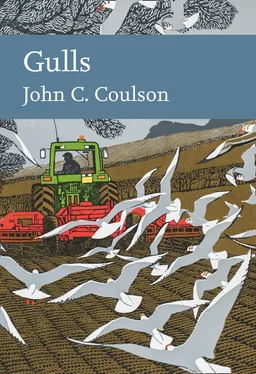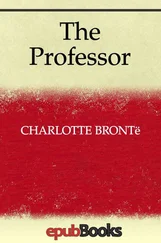In other cases, some existing subspecies have been promoted to the status of a full species, as has occurred recently within the Herring Gull complex in Europe and Asia. Still others may show only gradual changes in size, structure or plumage shades over their geographical range, a concept not recognised by early taxonomists until Julian Huxley applied the term clines to these groups in 1942. Such clines have already been demonstrated for the Black-legged Kittiwake (Rissa tridactyla), the Puffin (Fratercula arctica) and the Common Guillemot (Uria aalge) breeding in the North Atlantic. Questionable subspecies of gulls still exist, and some are discussed in more detail later in this chapter.
Initially, the eighteenth-century taxonomist Carl Linnaeus placed all gulls in the genus Larus, and most species remained there in what became a very large taxon. Eventually, the two species of kittiwake were removed from Larus and placed in the genus Rissa, while the Ivory Gull was moved to the genus Pagophila (P. eburnea), Sabine’s Gull was transferred to the genus Xema (X. sabini), and Ross’s Gull was placed in the genus Rhodostethia and then, more recently, to Hydrocoloeus (H. rosea), alongside the Little Gull (H. minutus). The Swallow-tailed Gull became the sole species in the genus Creagrus (C. furcatus). These separations were not unreservedly accepted, however, and as late as 1998, Philip Chu proposed returning all gulls to a single genus, Larus. Seven years later, the intensive study of the mitochondrial DNA of many gull species made by Jean-Marc Pons, Alexandre Hassanin and Pierre-Andre Crochet (2005) moved in the opposite direction and separated gulls into nine genera, and in so doing created the new genera Chroicocephalus (with 10 species worldwide), Hydrocoloeus (with two species) and Saundersilarus (comprising only Saunders’ Gull, S. saundersi, in China). Worldwide, at least 24 gull species, especially those with white heads in the breeding season, are still retained in the large genus Larus. Aside from Saundersilarus, three other genera are composed of only one species: Creagrus, containing the Galapagos Islands’ Swallow-tailed Gull; Xema, containing the High Arctic Sabine’s Gull; and Pagophila, including the Ivory Gull, also breeding in the High Arctic. Like Hydrocoloeus, the genus Rissa also contains two species.
One of the major findings made during the in-depth investigation by Pons et al. (2005) was that the gulls that had dark heads as adults did not form a single taxonomic group, as had been suggested by studies made in the second half of the twentieth century, but were composed of three distinct groups of species. These groups were called the ‘black-headed gulls’ and placed in the genus Ichthyaetus, while ‘hooded gulls’ were separated into another new genus, Leucophaeus. The third group, including the Black-headed Gull, were called ‘masked gulls’ and were placed in the genus Chroicocephalus. To an extent, this separation of gulls with dark heads in the breeding season is supported by similar courtship behaviour within each group, as originally suggested by Niko Tinbergen and his co-workers in the 1950s and supported by more extensive recent studies.
GULL SPECIES WORLDWIDE
Currently, there are about 50 species of gulls in the world. This total has increased in recent years and will probably be increased further as improved molecular techniques are used to revise their status; even the definition of a species may be modified or revised. The uncertainty about the precise number of species reflects the fact that the gulls as a group present a taxonomic nightmare, and this has resulted in years of confusion and disagreement. For example, the American Ornithologists’ Union (AOU) considers the Herring Gull breeding in North America to be a subspecies of the European Herring Gull (Larus argentatus smithsonianus), while the British Ornithologists’ Union (BOU) regards it as a separate species, Larus smithsonianus. There is still much confusion within the extensive Herring Gull and Lesser Black-backed Gull complex of species and subspecies, particularly those occurring in Asia (see box).
Speciation concepts
The decision as to whether and under what circumstances two populations of animals that occur in different geographical areas can be considered distinct species remains a taxonomic problem, because the level of genetic difference between the two that justifies specific status is often an arbitrary decision and one that is not always universally accepted.
One major taxonomic problem relates to the Herring Gull and Lesser Black-backed Gull complex of subspecies. In 1942, the evolutionary biologist Ernst Mayr suggested that the subspecies formed a chain around the northern hemisphere, starting with the Lesser Black-backed Gull in Europe, and then further subspecies occurring eastwards through Asia, each having progressively lighter-coloured wings and leading to the American Herring Gull in North America, and finally completing the ring with the Herring Gull of western Europe. The theory is that, by the time this chain of subspecies has spread eastwards around the northern hemisphere and the ends meet up again in Europe, the Lesser Black-backed Gull and the Herring Gull are obviously separate species and interbreed only very rarely. This beautiful explanation of a series of subspecies first spreading, then part of each becoming isolated, allowing the formation of further subspecies around the northern hemisphere and eventually producing two distinct species, was widely acclaimed and has been frequently quoted in books, scientific papers and lectures on genetics and speciation.
However, the recent development and application of mitochondrial DNA techniques has shown that the American Herring Gull is not the closest relative of the European Herring Gull as was previously thought, nor did it spread eastwards historically from North America to Europe to evolve into the European Herring Gull. That said, while the fascinating concept of a ring of gull subspecies spreading around the northern hemisphere and ending with two distinct species has been discredited, it may soon, with some minor modifications, become viable again. This is because the Lesser Black-backed Gull is currently spreading from Europe to North America via Iceland and Greenland, and is beginning to breed in Canada. As such, it is establishing new end points of the chain of subspecies, this time in North America and involving the American Herring Gull.
The Iceland Gull (Larus glaucoides), which breeds in Greenland and parts of arctic Canada, has entirely white primaries and is a well-established species, but there is conflict over the status of two similar gulls, Thayer’s and Kumlien’s gulls, both of which show some black on the tips of the primaries. The AOU recognises Thayer’s Gull as a distinct species (L. thayeri), but regards Kumlien’s Gull as a subspecies of Thayer’s Gull (L. thayeri kumlieni). Within Europe, there is considerable disagreement about the status of the three forms, with some national bodies (such as those in Ireland) agreeing with the AOU classification, and others (including the BOU) considering both Thayer’s Gull and Kumlien’s gull as subspecies of the Iceland Gull (L. glaucoides thayeri and L. g. kumlieni). Yet other bodies believe that they represent three distinct species. In this book and without strong conviction on the matter, I have treated Thayer’s Gull as a distinct species but have followed the BOU and regarded Kumlien’s Gull as a subspecies of the Iceland Gull. Fortunately, most individuals that visit Britain are typical Iceland Gulls and lack any black or brown on the wing-tips.
Elsewhere in the world, birds in the Kelp Gull and Dominican Gull complex (currently all known as Larus dominicanus) are similar and obviously related to the Great Black-backed Gull (L. marinus) of the North Atlantic. They are also a taxonomic problem and currently are regarded as consisting of five geographically separated subspecies. Just as some of the former subspecies of the Herring Gull have been recognised as distinct species, some of the L. dominicanus subspecies may also be elevated to species status when more intensive genetic and ecological investigations have been completed.
Читать дальше












